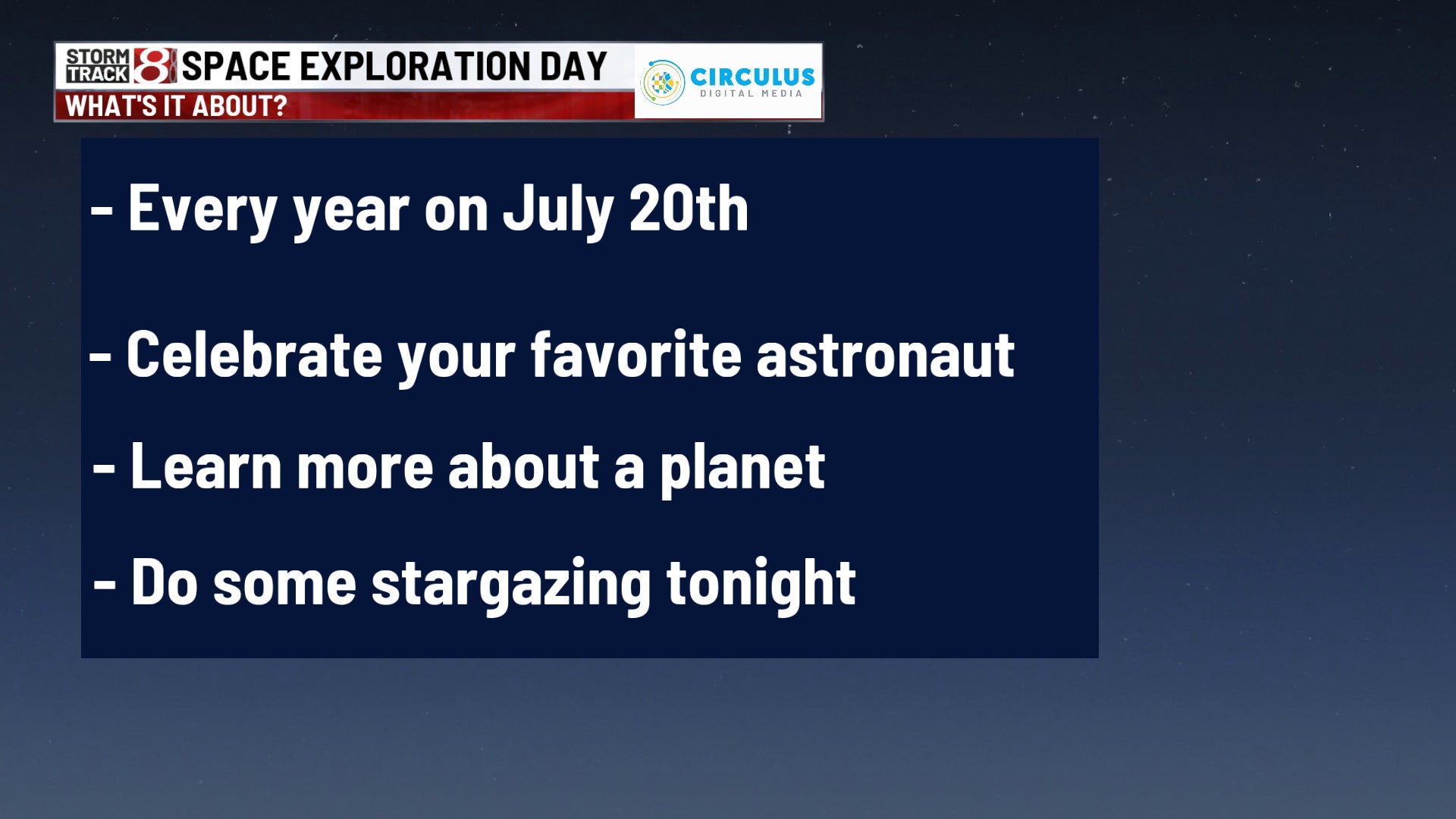Space Exploration Day is here and meteor showers are right around the corner
INDIANAPOLIS (WISH) — Every year on July 20, we celebrate all things space, from astronauts and their amazing feats to scientists and their discovery of planets.
Of course, you could also celebrate space itself and spend some quality time looking at the heavens above this evening. While tonight’s night sky won’t feature anything out of the ordinary, we are closing in on the most active time of the year for meteor showers.

In late July, we are treated to two minor meteor showers, both peaking on the same evening.
The Southern Delta Aquarius meteor shower is set to peak on the night of Saturday, July 30, and early on the morning of July 31.
With an expected rate of around 10 to 20 meteors per hour, this shower promises a minor glimpse of shooting stars for stargazers. The best viewing of these meteors will be in the southern half of the sky.
The Alpha Capricornids meteor shower is also anticipated to peak on the evening of July 30.
This meteor shower promises even fewer meteors with an average rate of 5 to 10 an hour. While the Alpha Capricornids shower typically produces a modest number of meteors, it occasionally showcases bright fireballs, making it an exciting event for skywatchers. This will be visible in any part of the sky, but most common near the constellation Capricornus.

The evening of July 30, unfortunately, going to be plagued with light pollution from a near full moon, making both of these meteor showers tricky to view. Some clouds on the night of the event might make it hard to see as well, however, that isn’t something that can easily be predicted 10 days before the event.

Finally, we get to the shower that everyone is waiting for. The Perseid meteor shower is one of the most popular and anticipated celestial events of the year.
It occurs annually from late July to mid-August, with its peak usually falling the night of August 12 this year. With a peak of around 100 meteors per hour, the Perseids offer a dazzling show of fast and bright shooting stars. The best part of all is that this year, the moon will only be 13% visible during the peak evening, meaning the viewing conditions will be excellent baring some clouds that evening.
